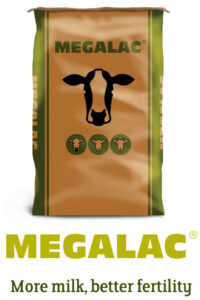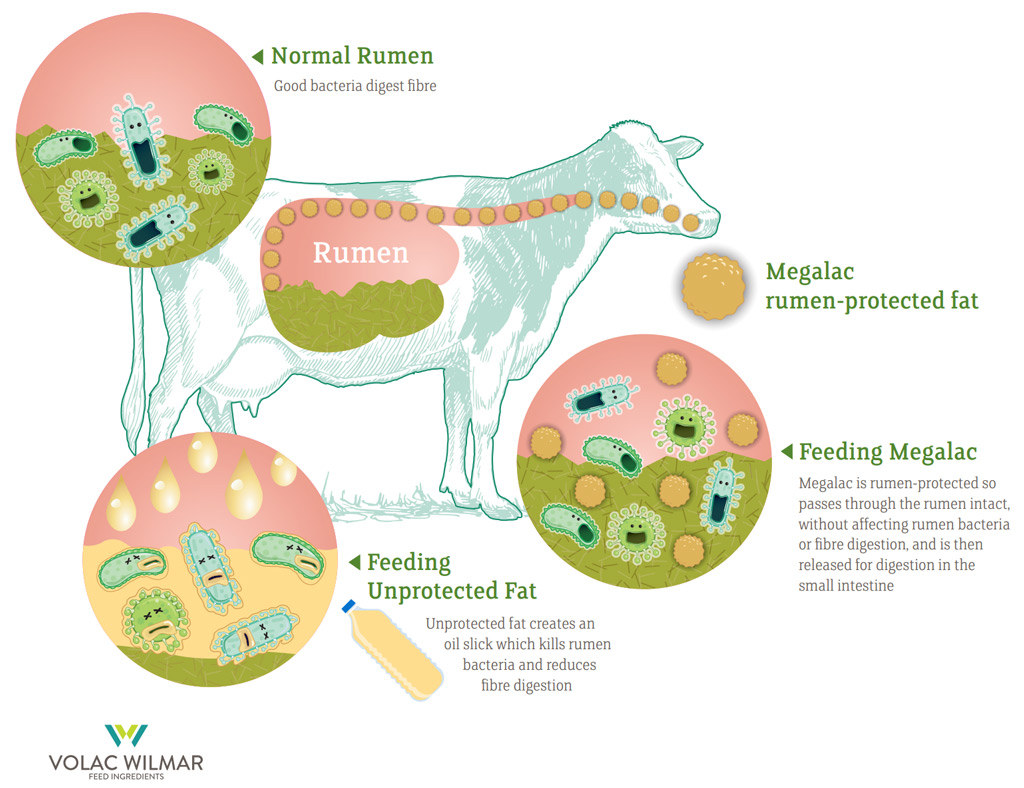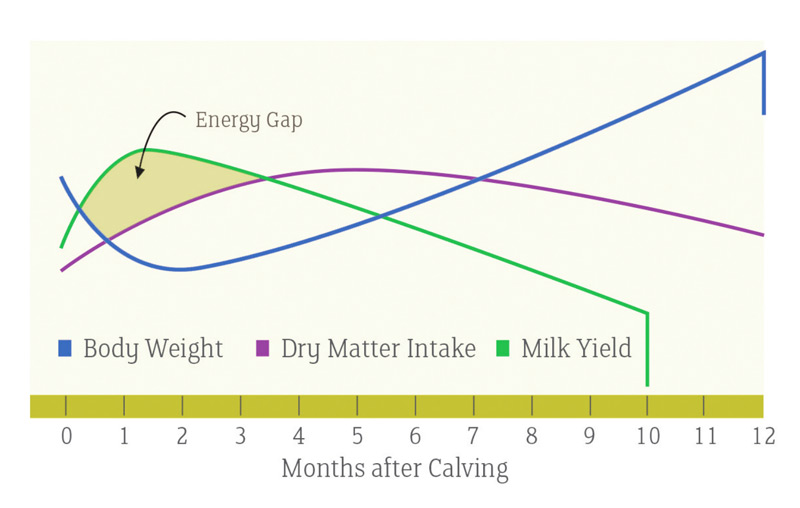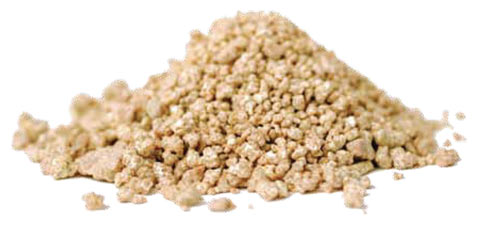
More milk, better fertility.
What is Megalac?
- Megalac is a high-energy rumen-protected fat made by reacting fatty acids and calcium to produce a rumen-insoluble fat supplement.
- Megalac avoids the disruption to fibre digestion associated with liquid oils and high-oil ingredients in the ration.
- Megalac granules pass through the rumen (ideal pH >6) but are broken down in the acidic small intestine (pH 2.5) to release the fat and calcium for digestion.

How does Megalac work?

Why Feed Megalac?
Megalac is a proven ingredient for increasing milk yield and cow fertility. It also supplies fat, one of the essential nutrients for productivity in dairy cows.
With over thirty years of research work at universities and research centres, and practical experience on farms, Megalac is one of the most proven feed ingredients on the market.
More milk
- The average increase in milk yield, recorded across 18 research studies, is 2.3 litres/cow/day from a standard supplement of 500 g of Megalac.
- This additional milk is produced primarily from the increase in energy supply from Megalac which has an energy concentration over 2.5-times that of cereals.
- Megalac also has the highest measured net energy of lactation (NEL ) value of any ingredient, indicating its very high efficiency for milk production.
- Adding Megalac to diets improves feed efficiency, producing more milk/kg feed.
Better Fertility
- As a concentrated source of energy, Megalac increases energy supply and is targeted to improve energy balance and reduce body condition loss of dairy cows to increase the likelihood of successful pregnancy.
As a guideline, conception rate decreases by 10% for every 0.5 unit decrease in body condition score (5-point scale). - Megalac also increases production of progesterone, the essential hormone for pregnancy, and improves quality of eggs and development of embryos, all of which contribute to improved fertility.
- In research work at the University of Florida (USA), Holstein cows offered 450 g of Megalac/day for 120-days from calving had higher conception and pregnancy rates.
| Control Diet | Megalac Supplemented | |
|---|---|---|
| Conception rate to 1st service (%) | 33.7 | 45.5 |
| Conception rate to 2nd service (%) | 28.8 | 75.0 |
| Pregnancy rate (%) | 52.3 | 86.4 |
‘Safer’ diets
Megalac is an excellent ingredient to help formulate more-balanced rations which can help reduce risk of digestive disorders.
Energy without acid
Megalac supplies energy as fat which, unlike starchy sources of energy such as cereals, is not fermented to acid in the rumen. This enables increased energy supply without increasing risk of acidosis and associated health problems such as lameness.
Other Benefits
- As a source of unsaturated fatty acids, adding Megalac to diets reduces the concentration of saturated fatty acids in milk fat.
- Megalac is not fermented in the rumen and reduces production of methane, one of the so-called ‘greenhouse’ gases. This not only has environmental benefits but also improves efficiency of use of energy in the diet.
When to feed Megalac?
- Megalac can be fed throughout lactation, but is particularly targeted to early lactation rations.
- Milk yield increases rapidly after calving, while dry matter and energy intake rise at a much slower rate. This leads to an ‘energy gap’ in early lactation when cows ‘milk off their backs’ to meet the energy shortfall and therefore lose
body condition. - Megalac increases energy density in rations (more energy per bite) to supply additional energy despite lower intakes.

How Much Megalac To Feed ?
Research indicates that the amount of fat required by a dairy cow (neither gaining nor losing body weight) is equal to the amount of fat produced in milk each day.
| Example Fat Requirements | |
|---|---|
| Milk yield | 40kg/day |
| Milk fat | 4.0% |
| Milk fat yield | 1.6 kg/day |
| Diet fat requirement | 1.6 kg/day |
Estimates of fat supply from a diet and requirements of cows at particular levels of production can be determined using the Volac fat calculator.
See Fat Calculator: www.volac.com/fat-calculator
| Species | Typical feed rate (g/head/day)* |
|---|---|
| Lactating Cows | 400-800 |
| Dry Cows | 125 |
| Beef Cattle | 150-500 |
| Sheep & Goats | 50-100 |
Megalac should always be mixed with other ingredients in the diet and can be included as part of a total mixed ration, blend or compound feed.
Ideally Megalac should be incorporated into the ration over a few days to help acclimatise the animal to the new ingredient.
* For more specific recommendations consult with a nutritionist
Megalac – Description
A dry free-flowing granular product with consistently-sized large granules and minimal fines.
Typical Analysis (%)
| ME 33.3 MJ/kg DM | |||
|---|---|---|---|
| Fat 84 | Ash 12.5 | Calcium 9 | Moisture 5 |
Fatty Acid Profile (% of total fatty acids)
| Saturated | Unsaturated | ||
|---|---|---|---|
| C16.0 48 | C18.0 5 | C18.1 36 | C18.2 9 |
How is Megalac packed?
Available in 25 kg bags on pallets, mini-bulk bags and true bulk.

Storage
Store in cool, dry conditions.
